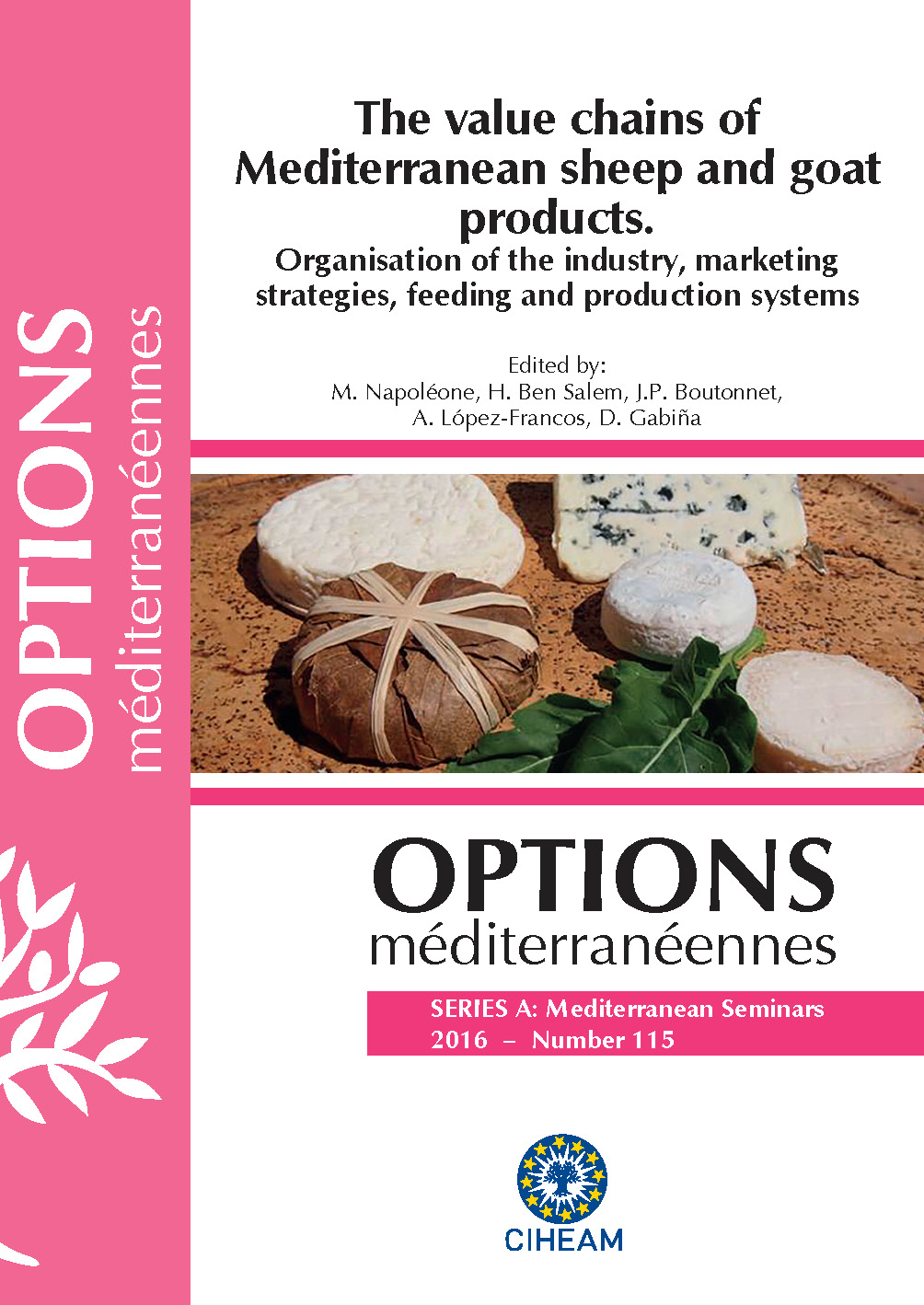| Article précédent | p. 417-420 | Article suivant |
Temperature and humidity effects on performance of high and low yielding dairy sheep and goats
A total of 49,918 and 1,176,670 test-day records belonging to 8,231 lactating goats and 177,605 lactating ewes, respectively, were used to study the response of Spanish dairy goats (Florida breed) and sheep (Manchega breed) to heat stress. The productive traits which were controlled include daily milk, fat and protein yields. The tolerance threshold and the slope of the response of these traits to thermal stress have been calculated. Test day records from each herd were merged with maximum and average daily temperature and a temperature-humidity index (THI) registered in weather stations the day of milk recording. Two sets of data were analysed: data from high milk yielding animals and data from low milk yielding animals. Two thresholds were found, one for low temperatures and the other for high temperatures. Climatic effects on yields were less marked in ewes compared to goats. Small differences were found between high and low productive animals in respect to thresholds and slopes, except for the reduction of fat and protein yields due to heat stress.
Un total de 49.918 et 1.176.670 test-jour des enregistrements réalisés sur, respectivement, 8.231 chèvres et 177.605 brebis en lactation ont été utilisées pour étudier le stress thermique dans des chèvres espagnoles de race Florida et des brebis espagnoles de race Manchega. Les paramètres étudiés sont la production journalière de lait, de matière grasse et de matière protéique. Le seuil de tolérance et de pente de la réponse de ces paramètres au stress thermique ont été calculés. Les enregistrements quotidiens de chaque troupeau ont été combinés avec la température quotidienne maximale et moyenne et un index de température-humidité (THI), enregistrés dans les stations météorologiques le jour même du contrôle laitier. Deux ensembles de données ont été analysés: données parvenant des animaux à haute production laitière et données issus des animaux à faible production laitière. Deux seuils ont été trouvés, un pour les basses températures et l’autre pour des températures élevées. Les effets du climat sur les rendements étaient moins marqués dans le cas des brebis. Pas de différences importantes ont été trouvées entre les animaux les plus et les moins productifs en ce qui concerne les seuils et les pentes, à l’exception de la décroissance des rendements de la matière grasse et de la matière protéique induite par le stress thermique.
- [ Afficher ]
- [ Télécharger ]
- [ Exporter la citation ]
Vous pouvez télécharger la citation au format :
- [ Imprimer ]
-
Mots-clés
LAIT, MATIERE GRASSE DU LAIT, PRODUCTION, PROTEINE, STRESS THERMIQUECiter cet article
Serradilla J.M., Ramón M., Abo-Shady H.M., Molina A., Pérez-Guzman M.D., Díaz C., Carabaño M.J. Temperature and humidity effects on performance of high and low yielding dairy sheep and goats. In : Napoléone M. (ed.), Ben Salem H. (ed.), Boutonnet J.P. (ed.), López-Francos A. (ed.), Gabiña D. (ed.). The value chains of Mediterranean sheep and goat products. Organisation of the industry, marketing strategies, feeding and production systems. Zaragoza : CIHEAM, 2016. p. 417-420. (Options Méditerranéennes : Série A. Séminaires Méditerranéens; n. 115). Joint Seminar of the Subnetworks on Nutrition and on Production Systems of the FAO-CIHEAM Network for Research and Development in Sheep and Goats, 2015/06/16-18, Montpellier (France) . http://om.ciheam.org/om/pdf/a115/00007308.pdf



